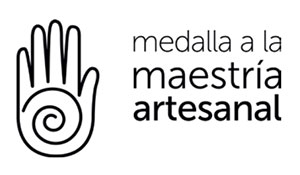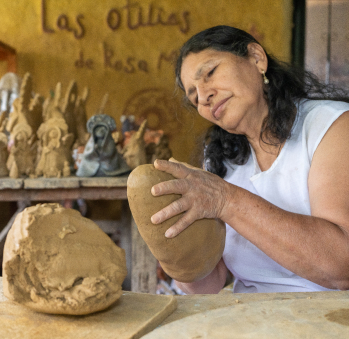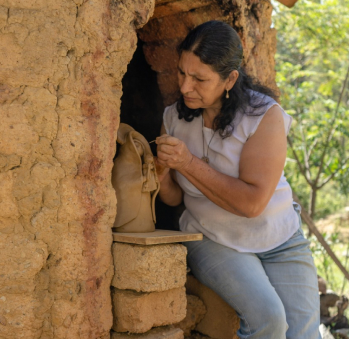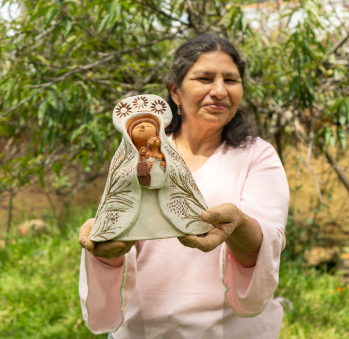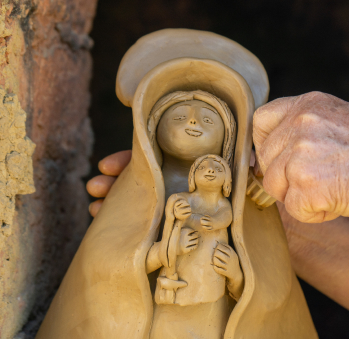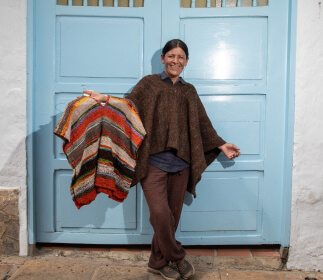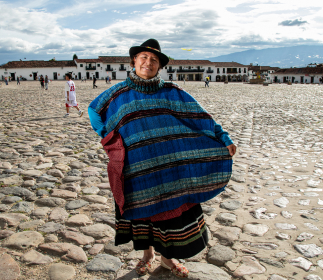Rosa María Jerez Ruiz
She once saw the Virgin Mary move. She felt her penetrating gaze and was shaken to her core. For a long time, Rosa María believed that this “statue” had spoken to her when she was six years old. Although she dared to touch it then and realized that —as her mother had told her— it could not move, she did not lose faith. She decided to do in clay what other artists did in plaster when they created those sculptures. She wished to “be known for one’s work,” as she put it: to make people’s hearts jump as hers had once done when they witnessed her works. She eventually fulfilled her dream, but she had to cross a long and winding road before getting there.
She started early on in her life. She lived in the town of Ráquira, which, at the time, was “no bigger than its main square.” She constantly watched her wise and hardworking mother, María Otilia Ruiz de Jerez, make vases, pots, chorotes, pans, and casserole dishes. María Otilia commended herself to Saint Rufina, the patroness saint of potters, before going to the mine to gather mud. She touched it to see where she could get the softest material, carried water on her back, and let her daughter be with her during the mud’s burning and transformation processes. Rosa believed her mother was as tireless as she was self-sacrificing. She understood what it took for her mother to bring mazamorra every day to a table of seven people. She also noticed how women who resold products in the Villa de Leyva marketplace earned more than her mother and all the other potters who worked from dawn to dusk did.
She was aware of all of this and wanted to help María Otilia in any way she could. She, however, did not know how. She was obsessed with making a morraco that would make everyone marvel. This was long before ceramics were regarded as ornamental. Hence, she became a pioneer in her field when she managed to make little figurines that depicted the Virgin Mary. Nevertheless, there was still a long way to go from that point to the registration of her trademark and her eventual fame.
Nothing related to this woman is ordinary. For instance, one day, her mother took a couple of decorative churches to the market. They were small, uneven, and had been made “just for kicks.” Yet, they caught the attention of a couple of journalists who claimed that in Boyacá lived a woman named Maria Otilia who made works similar to those of Gaudí. Thus, the pieces made by mother and daughter started resembling them —be they farmers or virgins, Del Carmen, Del Rosario, or Rosa Mística, it did not matter— and were nicknamed “Otilias.” They became one of Ráquira’s real trademarks.
This magical story continued when Rosa Maria captivated the American people when she presented her work at the Smithsonian museum in Washington D.C. Moreover, as if this was not enough already, her most successful Otilia is currently being exhibited at Vatican City. Rosa has been able to achieve what she dreamed of when she was but a six-year-old girl: that whoever looks at her becomes transfixed.
Craft
















Artisans along the way
Artisans along the way
No puede copiar contenido de esta página








































